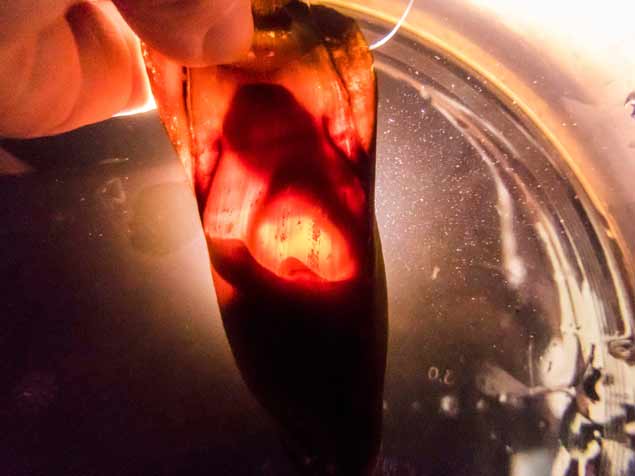It’s the Year of the Shark at Ireland’s Sea Life Centre where two Short Tail Nurse Sharks have bred for the first time. The eggs from the rare sharks, now facing a dramatic decline in the wild, can now be seen growing in their tank and the pups are expected to hatch towards the end of the year.
The female shark was born in Sea Life in 2006 from a wild caught egg and is one of the first of the species to breed in captivity. The male shark was also born in 2006, in Artis Zoo in Amsterdam and came to Sea Life on loan in 2013 as part of a European breeding programme. But they didn’t breed immediately, it took them four years to get together! This shark is only found in three locations in the wild, off the coasts of Tanzania and Kenya in East Africa and in the waters surrounding Madagascar.
 A shark embryo develops in one of the rare eggs from the Short Tail Nurse Shark at the National Sea Life Centre Bray
A shark embryo develops in one of the rare eggs from the Short Tail Nurse Shark at the National Sea Life Centre Bray
The Short Tail Nurse Shark has been placed on the ‘vulnerable’ list by the International Union for Conservation of Nature. Its decline has resulted from commercial overfishing for food and particularly for its fins, which are regarded as a delicacy in Asia and which sell for around £140 a kilo. The fish is also caught as a bycatch in the heavily fished inshore waters of East Africa. It also suffers from the destruction of its natural habitat, the coral reefs.
It is a fascinating animal to watch. An inshore bottom dwelling species, it has a unique feeding apparatus with a small mouth but an enlarged pharynx that allows it to create a vacuum and suck up its prey. It is a nocturnal feeder, preying on sea urchins, squid and octopus. It has a habit of regularly floating upside down and can live for up to 33 years in captivity, becoming mature when it is 56 cm long.
Pat O’Suilleabhain, Director of Sea Life Bray, says it is a great achievement to have these rare sharks breed successfully in Ireland and that Bray can be proud to be part of a European wide breeding programme. ‘We became a part of this very interesting programme when Artis Zoo in the Netherlands agreed to loan us the male shark. There is little known about their breeding habits so there is great excitement throughout Europe as we wait for the pups to hatch.’
The eggs and the parents are currently on display at Sea Life in Bray.































































